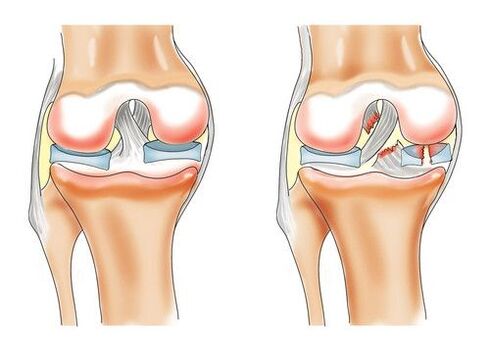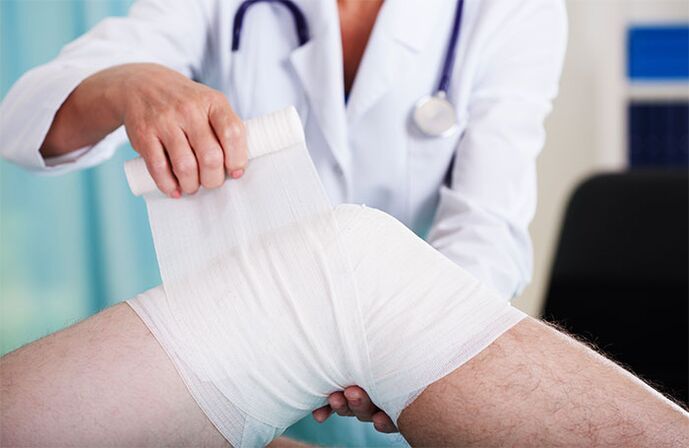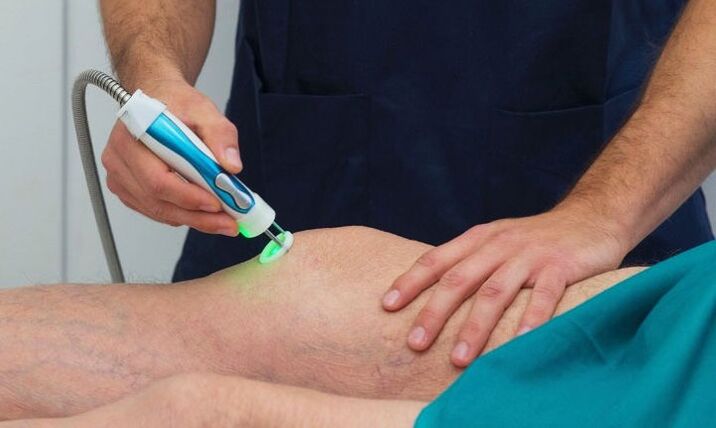
If you hear a squeak in the knee joint during movement, this is the first sign of gonarthrosis. Conservative methods of traditional and alternative medicine will help prevent the destruction of cartilage and maintain normal motor function. Treatment should begin immediately - only in this case, rheumatologists give a favorable prognosis.
What is gonarthrosis?
The largest joint, a non-inflammatory, degenerative-dystrophic disease that affects the knee, is called gonarthrosis. A rather unusual medical definition has a simpler "folk" concept - "salt deposition". However, the clinical picture of gonarthrosis of the joints has little to do with the abundance of calcified salts in the knee joint. They have no effect on pathology and are a side effect of impaired metabolism.
The development of gonarthrosis of the knee joint is facilitated by negative processes in the hyaline cartilage, primarily with poor blood circulation in the small bone vessels. Lack of nutrients and oxygen transported by the lymph flow leads to the destruction of the outer cartilage layer of the knee.
It is very difficult to recognize the disease in the early stages. Joint deformation occurs slowly, until the vitreous hyaline cartilage is involved in the process. The anatomical structure of the garden is changing. Blurring occurs, the tissue thickens, thins, cracks on all sides. The result of the pathology may be the complete disappearance of cartilage, which leads to neoplasms in the bone tissue and irreversible curvature of the knee.
Classification of the disease
The International Classification of Diseases divides gonarthrosis into seven subheadings:
- Bilateral primary gonarthrosis. The diagnosis is more common in women aged 70-74 years and men aged 60-64 years. This puts the disease in the category of "elderly".
- Another primary gonarthrosis. Pathology of a knee joint against the background of natural wear and tear or other diseases.
- Bilateral posttraumatic gonarthrosis. People of different ages with serious foot injuries are affected.
- Other posttraumatic gonarthrosis. Unilateral, against the background of joint damage and bruises.
- Other secondary gonarthrosis is bilateral. They are the result of chronic, incompletely treated bruises, fractures or dislocations. It is most often diagnosed in athletes with heavy loads on both legs - footballers, athletes, figure skaters.
- Other secondary gonarthrosis. One-sided development of occupational pathology. For example, miners, metallurgists, fishermen.
- Gonarthrosis, unspecified. It is diagnosed with an unexplained etiology of the disease, regardless of age, occupation and genetic predisposition.
According to medical statistics, more than 10 million people of different ages suffer from some form of gonarthrosis. Every year, about 3, 000 people die with a diagnosis.
Reasons
Osteoarthritis of the knee joint develops due to a violation of metabolism in the knee joint, which leads to a loss of softness and elasticity of cartilage.
Destructive processes have different causes:
- Diseases of the thyroid gland that disrupt the hormonal background;
- Decreased openness of blood vessels in the knee joint;
- genetic conditioning;
- natural aging;
- Past or present knee injuries of various origins;
- Obesity with excessive pressure on the knee joint (more than 20% of the norm);
- Inflammatory joint diseases (polyarthritis, purulent osteoarthritis);
- autoimmune diseases (rheumatoid arthritis);
- Specific infectious pathologies (syphilis, tuberculosis, encephalitis);
- Living in environmentally unfavorable areas, poor quality of food and water.
Rheumatologists also identify several additional causes of gonarthrosis. Dysplasia in newborns. It wears out more quickly with this diagnosis. Changes in the structure of collagen lead to the breakdown of protein located in the connective tissue.
Symptoms depending on the degree of gonarthrosis
The initial stage of osteoarthritis of the knee is difficult to determine. Only the description of symptoms by the patients themselves and external examinations by rheumatologists allow to compile a clinical picture that is different for each stage of development of gonarthrosis:
- I degree gonarthrosis.Pain in the knee, a slight stiffness, partial loss of sensation, difficulty in bending the leg, especially after prolonged inactivity, inability to walk or run for a long time, slight swelling. As a rule, the symptoms disappear after rest or simple anesthetics.
- Grade II gonarthrosis.At this stage, it is already possible to determine the pathology on X-ray examination. The pain intensifies and occurs after each physical activity. Anxiety can still be overcome with rest. It is difficult to straighten your legs in the morning, it takes some time to restore motor function. Anxiety, especially at night, is often accompanied by cramps in the calf. A squeak is heard while moving. Swelling of the knee joint is pronounced. There are visible signs of limb deformity.
- Grade III gonarthrosis.There are irreversible changes in the knee joint. Cartilage abnormalities can undoubtedly be detected on an X-ray. Knee pain is constant and sharp. The foot stops bending at the knee. The patient cannot walk without crutches and armpits. Swelling is important. The anatomical shape of the knee is smoothed and firm. The spine has an initial curvature.

Diagnosis
A combination of clinical manifestations of osteoarthritis of the knee joint and patient complaints is used to make a correct diagnosis. Research is conducted in various ways to clarify or exclude the causes of the disease.
Standard diagnostics are performed as follows:
- Compilation of medical history. Accompanying diseases, genetic predisposition, past traumas and surgical interventions, professional activity, etc.
- External assessment of the deformation of the musculoskeletal system. Walking, posture, condition of the knee joint, curvature of the legs.
- General inspection. Palpation of the lower leg, thigh, damaged joint, determination of the localization of the disease.
- Laboratory tests. A complete blood count indicates the absence of an inflammatory process. If the process takes place against the background of other diseases, an increase in the rate of erythrocyte sedimentation rate will be detected in the blood. Protein, globulin and fibrinogen levels will be different from the norm. The biochemical composition will remain within the standard limits. If the pathology is advanced, a biopsy of the synovial fluid of the knee joint is performed.
- Instrumental research. X-ray is the main and most common method of diagnosing suspected gonarthrosis. As a rule, a rheumatologist can easily identify changes in the structure of bone tissue from a picture that is at the beginning of the 2nd stage of the disease. The presence of side diseases and their causes are diagnosed with the help of more modern and accurate equipment - MRI, CT, ultrasound, osteostinography, thermography.

Treatment of gonarthrosis
Like all joint diseases, gonarthrosis requires systemic treatment, it is desirable to begin when the first symptoms appear. In this case, the prognosis of therapy is favorable and guarantees a return to a normal lifestyle in a fairly short time.
Complex treatment is aimed at eliminating the main symptoms of the disease:
- Anxiety, pain syndrome and muscle tone;
- Improving the motor function of the knee joint;
- Stopping the process of cartilage destruction;
- strengthening connective muscles;
- Restoration of normal blood circulation in the knee joint.
Medications
Anti-inflammatory drugs
They help to cope with pain, eliminate swelling caused by inflammation of muscle tissue.
Chondroprotectors
Without chondroprotectors, cartilage tissue repair and regeneration is not possible. They are a key component of conservative treatment.
Vasodilators
They are used to improve the openness of intraarticular blood vessels.
Hormonal drugs
Reduces the production of the hormone cortisone to prevent the development of inflammatory processes.
Hyaluronic acid injections
Used to restore intraarticular synovial fluid. As a result, friction between the joints is reduced, motor function is normalized and the elasticity of cartilage tissue is restored.
Anti-enzymatic agents
They inhibit the activity of trypsin, thereby preventing further destruction of the joint. Appointed in the complex.
Physiotherapy
Physiological therapies have been used successfully for decades to treat knee osteoarthritis. This can be as a separate type of therapy during prophylaxis or rehabilitation. This is the integrated approach to the disease.
The following types of procedures are often prescribed by a rheumatologist:
- electrophoresis with analgesics;
- Ultrasound treatment;
- Magnetotherapy;
- laser exposure;
- Paraffin applications;
- mud treatment;
- Therapeutic exercise (exercise therapy);
- Manual therapy, massage with medicated ointments.
Surgery and prosthesis
If gonarthrosis is at an advanced stage, if the knee joint and cartilage tissue are destroyed, it is impossible to do without surgery. Otherwise, the person will remain disabled for life.
Modern medicine offers several ways to solve the problem:
- Arthrodesis. Complete removal of affected tissues and knee joint. The body is freed from the focus of the disease, but the motor function of the joint is completely lost. It is rarely used if the patient has additional articular diseases.
- Arthroscopy. Destroyed hyaline cartilage is removed. The operation is less traumatic, has a short rehabilitation period. This is indicated for patients whose progression does not affect the knee joint itself.
- Periarticular osteoma. A complex operation is the process of attaching deformed bones and protrusions to the required anatomical structure.
- Endoprostheses. A completely dislocated knee joint is removed and replaced with a titanium prosthesis. Gonarthrosis is an effective method that allows you to forget forever. Requires careful preparation and lengthy rehabilitation.
Traditional medicine
The use of folk recipes in combination with conservative treatment can relieve external symptoms (pain, swelling). Recipes based on bay leaf, burdock root, St. John's wort, malt and straw have proven themselves well. Ointments, creams, tinctures and decoctions are made from them.
These plants have anti-inflammatory and analgesic properties. Regular and long-term use is required to achieve visible results.
Ointments and compresses based on honey, with the addition of alcohol or apple cider vinegar, eliminate swelling well and have a calming effect on the affected tissues.
A food mixture is prepared from lemon and garlic, and one teaspoon each is taken orally after breakfast and dinner. Such a recipe has a general strengthening effect on the body, increases the openness of blood vessels and nourishes the joints with beneficial trace elements.
It should be borne in mind that home treatment does not eliminate the main problem - the pathological destruction of the knee joint.

Diet
Dietary compliance is an integral part of a comprehensive treatment. Adjusting your diet will not only help you manage your weight, but will also provide your bones and joints with essential vitamins.
Contraindicated for a patient diagnosed with gonarthrosis:
- Eat fried, spicy, salty, sour;
- oily broths;
- sweet dough;
- Fruits with a high content of acid enzymes;
- Alcoholic beverages.
The menu should be filled with raw vegetables, fruits and greens, low-fat sour milk products, bone broth and dishes containing gelatin (jelly, jelly).
Additional methods
For the treatment of gonarthrosis it is necessary to undergo spa treatment at least once a year, if possible more often. Hydrotherapy, mud therapy and manual therapy procedures are able to keep the disease for a long time and prevent joint destruction.
You will get the rest of your life to keep your aching knee stable. But it can be very beneficial for the body as a whole. Consideration of nutrition, elimination of bad habits, exercise, visits to resorts - can significantly improve the quality of life.
It is important to remember that self-medication, ignoring the initial symptoms, and unbearable stress on a painful knee joint can quickly turn a healthy person into a helpless disabled person.






























